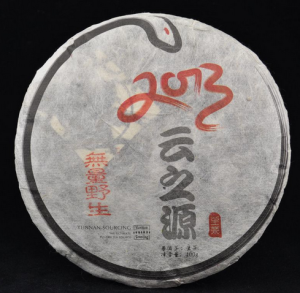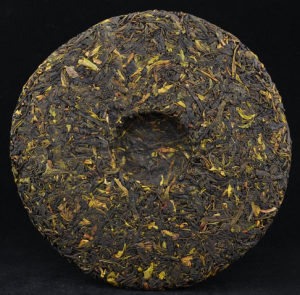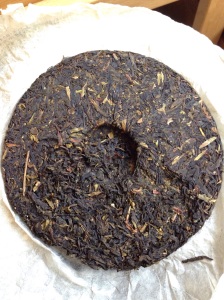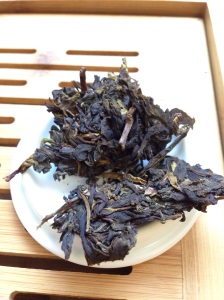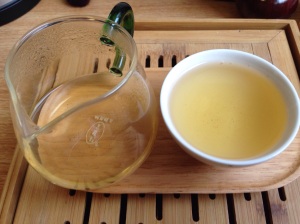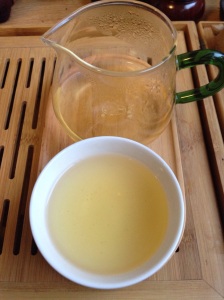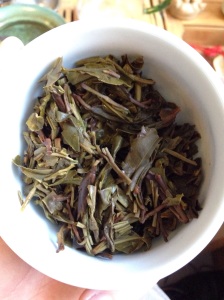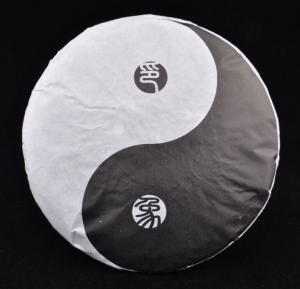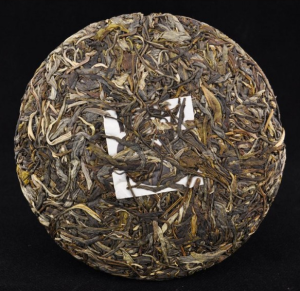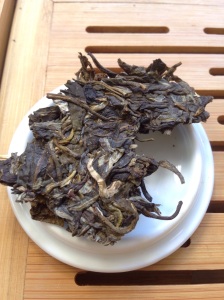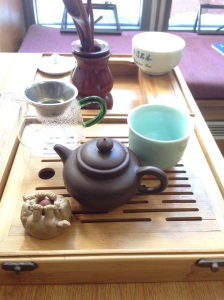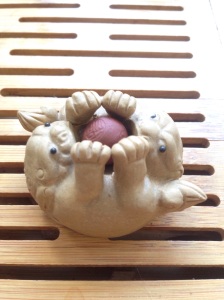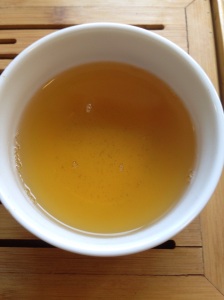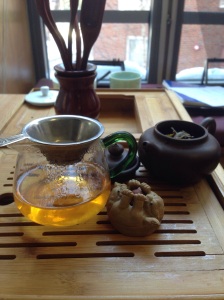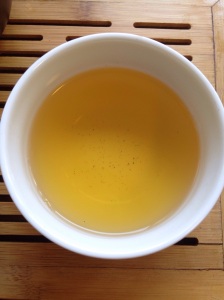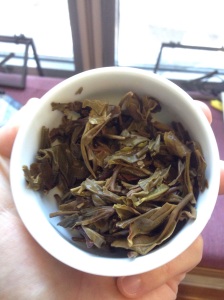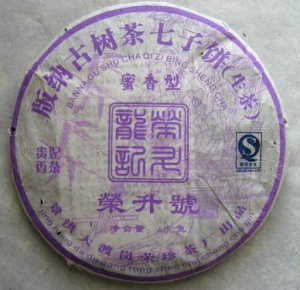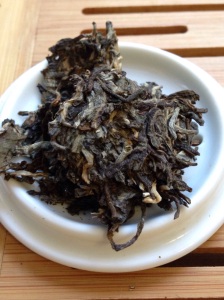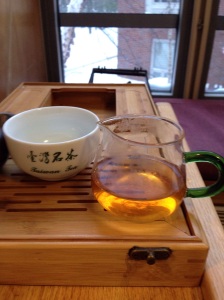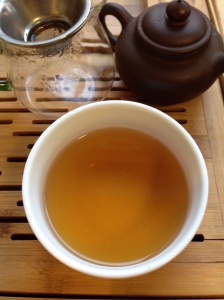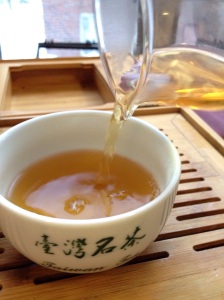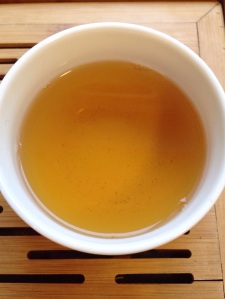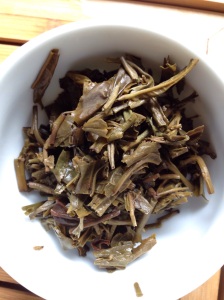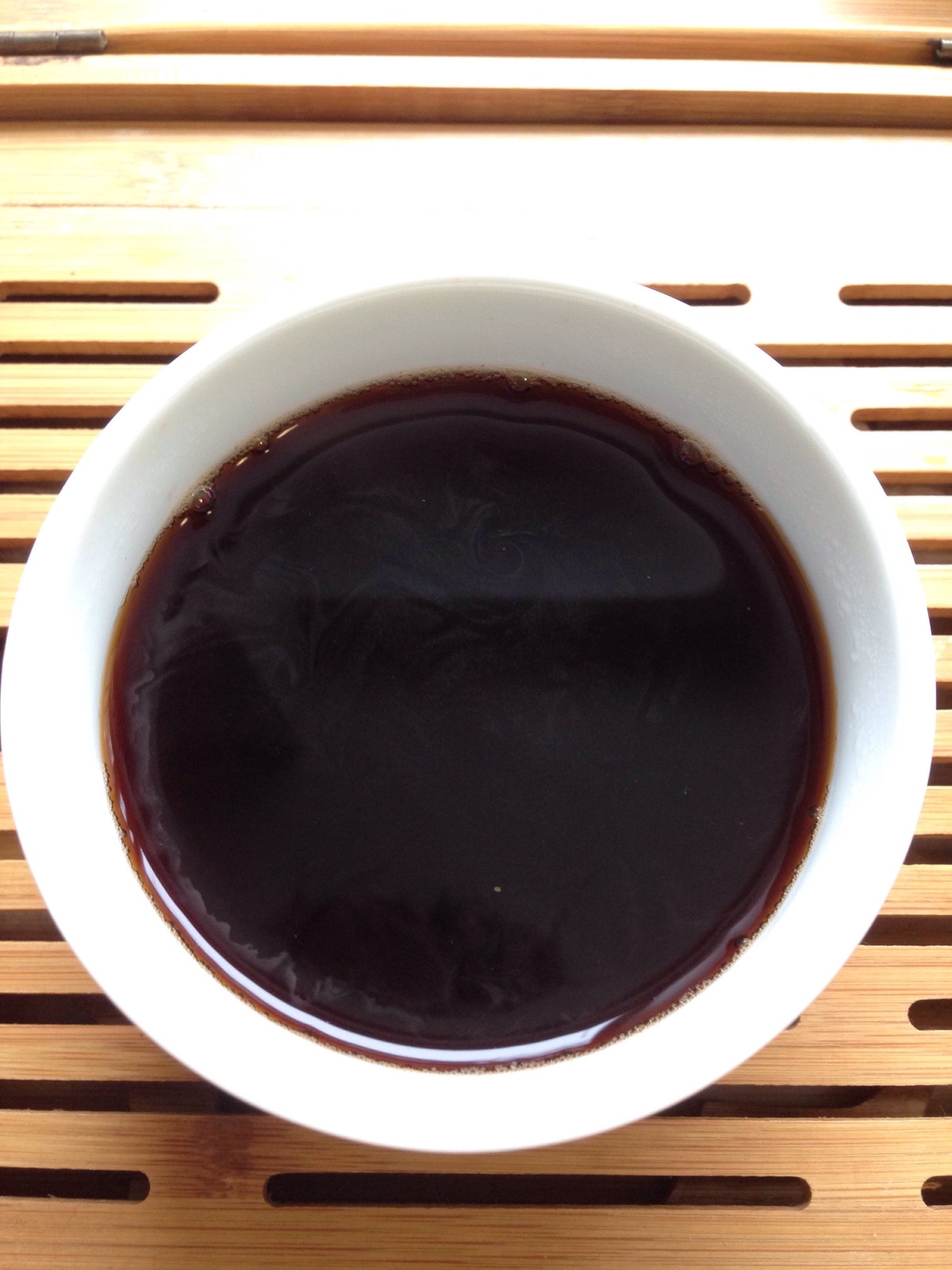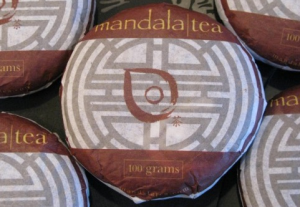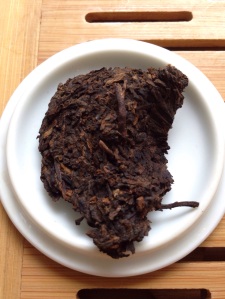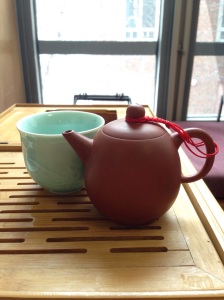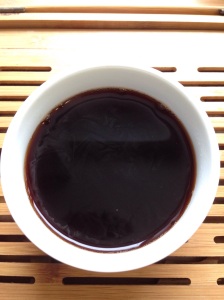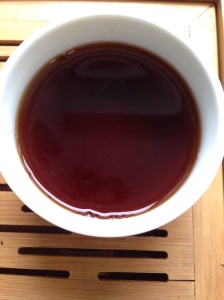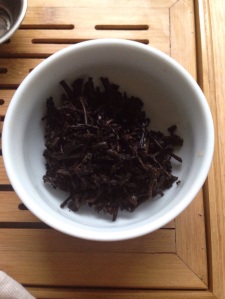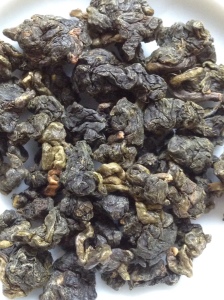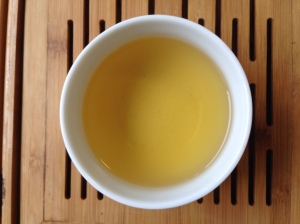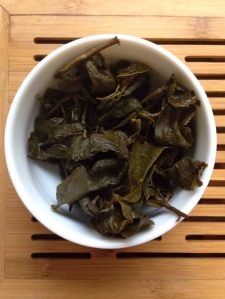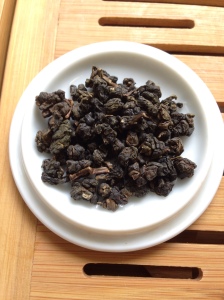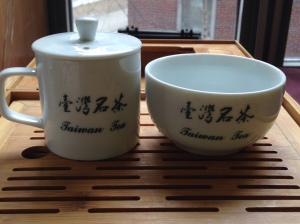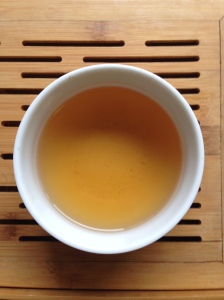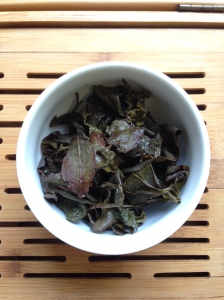What is the most bitter tea that exists?
Reali-tea. Ouch.
Ah, the “tea joke” threads on Steepster and TeaChat never get old.
I am a big fan of purple tree puerh teas, although most of my readers out there in Tea Blog Land will probably disagree with me. Purple puerhs have a reputation for being super powerful and bitter. I should start by mentioning that this particular tea is not bitter at all. However, this reputation that purple puerh holds brings up an important idea. In my opinion, bitterness should be embraced, not feared. Tea with more bitter characteristics can be enjoyed just as much as dark chocolate, IPA beer, coffee, or Chinese bitter melon. Of course, I’m not referring to the bitterness that comes from oversteeping teas. Rather, it is important to simply enjoy the more bitter nature that some teas, such as some varieties of puerhs or Japanese greens, naturally hold.
A major reason for our natural distaste for bitter foods and drinks comes from cultural influences. In Bitter: A Taste of the World’s Most Dangerous Flavor, Jennifer McLagan investigates why some cultures such as China and other East Asian nations tend to love bitter tastes, while North Americans and Western Europeans tend to steer far away. I definitely recommend reading this book. It will open up your eyes to the importance of bitterness.
I will admit that some purple puerhs taste a bit like dipping your tongue into a vat of arsenic (made that mistake…never again). But this tea is something special. This I the only purple puerh I’ve ever had without barely trace of that punching bitterness.
The cake I received looks just like the photo from Yunnan Sourcing. Mine is a bit more mangled of course. Puerh is not like fast food, where you get some gross crap that looks nothing like what is advertised. With puerh, you get exactly what you ordered. Thanks Yunnan Sourcing!
This 2013 Wu Liang Ye Sheng from Yunnan Sourcing came into my life somewhat haphazardly. I was gifted an Amazon gift card a few months back, and I wasn’t sure what to spend on it. Luckily I stumbled upon Yunnan Sourcing’s Amazon store. They only offered perhaps six or seven different cakes on their Amazon storefront. After I received my order, I noticed that the Yunnan Sourcing Amazon page disappeared from the world. Hmm, not sure what that’s about.
Out of the cakes that Yunnan Sourcing offered, the 2013 Wu Liang Ye Shiang jumped out to me. Once I read the words “wild tree purple,” the tea was in my cart.
This cake is made entirely of Ye Sheng varietal tea leaves. According to some Internet research, Ye Sheng or 野生, refers to a subspecies of Camellia sinensis assamica. This is a naturally occurring varietal found only in Yunnan Province, China. The Ye Sheng tea plant is naturally bug repellent, which might explain its powerful nature. The tea for this cake was picked from bushes above 2000 feet in elevation, and between 50 and 200 years old. The tea leaves are from a farm in Jingdong County, which is inside of Pu’er Prefecture, also known as Simao Prefecture, which is in Southern Yunnan, China. Wow, that was complicated.
I could not find any explanation for why exactly the tea is purple, but I can make an educated guess thanks to my small knowledge of plant biology and plant physiology. Since these tea leaves are grown at a very high elevation, they are exposed to more UV (ultraviolet) light. UV light is represented by the purple part of the color spectrum. The leaves likely turn purple as a natural defense mechanism in order to reflect some of this UV light and protect the plant from some of these UV rays. Plants often have defense mechanisms like this, turning purple due to a buildup of anthocyanins in the leaves. Or perhaps it is all just a quirky genetic variation. If you know the answer to this, tell us all about it in the comments.
Dry Leaf
I weighed out 8.4 grams of the puerh to use in my gaiwan. The leaves are very dark purple with some larger green leaves sticking out. The leaves are very large and lightly compressed.
The dry leaf smells very smoky and fruity. The fruity note is incredible strong…you can even smell it through the paper label. To me, it smells very much like stone fruits, perhaps plums or cherries.
Teaware
I used my favorite gaiwan, which I purchased at Dobra Tea in Portland, Maine. Isn’t he/she beautiful?
Sadly, my gaiwan took a bit of a tumble. When I was washing the gaiwan before this review, I dropped the lid and it bounced off my sink. Somehow, the Tea Gods graced my presence and the lid managed to escape unscathed. Phew, that would have been devastating.
The cup and tea coaster are from the Tea Ave sampler that went out last week. I will review those teas next week, once the pricing comes out!
Brewed Tea
I gave this puerh two quick rinses. I went with a 5 second steep to start, and then increased by 5 or 10 seconds each steep.
These photos are of the third and fourth steeps. The third steep came out a beautiful golden straw color.
This tea is very complex. It is very mellow and delicate for a wild tree purple puerh. If I tasted this blindfolded, I would have never guessed this tea is only a year or two old.
Although the tea smelled very smoky, the brewed tea has barely a trace of smoke flavor. The main flavors that I picked up on were very intense stone fruit tastes, just like the smell suggested. The cherry and plum notes are so noticeable here that you definitely can’t miss them. There is also a pleasant sour, tart note on the finish that many other reviewers noted. Some tea writers described this as a lemony taste, which I would agree with.
The most noticeable aspect of this tea is the incredible thick mouthfeel. The tea coats your mouth with a rich buttery taste, similar to the sensation of drinking a quality high mountain Taiwanese oolong. I couldn’t get enough of the creamy mouthfeel. Awesome!
Once steeped, the leaves looked much more green than they did in their dry form. The steeped puerh leaves look pretty much the same as any other puerh tea.
By the eighth steep, the color has lightened up quite a bit but the taste is still just as strong.
Finished Leaf
I got about 10 steeps out of these leaves. I am drinking a few more steeps of the tea right now, and it is still going strong! The leaves were quite varied in size. Some of the leaves were huge, and some were tiny and appeared chopped up. I’ve never seen puerh leaves with such mixed colors.
Conclusion
This tea offers a great introduction into the world of purple puerhs. This cake was $41 for 400 grams, which I suppose is sort of the mid level of young sheng pricing. I really enjoy this cake, and would buy it again. This is one of the best sheng puerhs I have had! I love this tea, and I am looking forward to enjoying this cake for the next few months. Luckily I’ve got about 390 grams left!
“Coffee is not my cup of tea” ~Samuel Goldwyn

